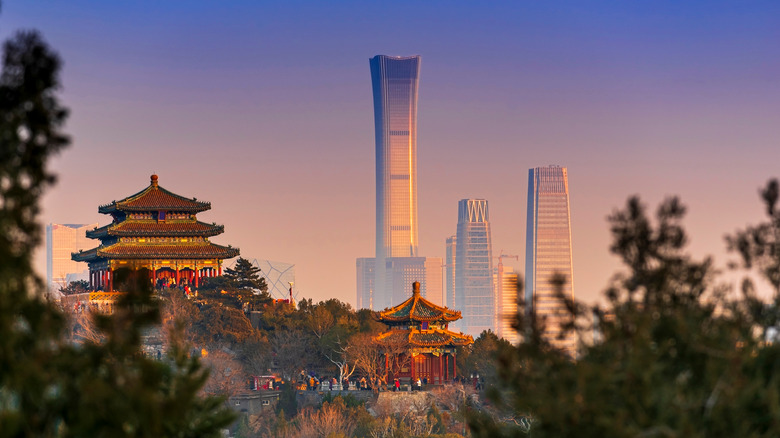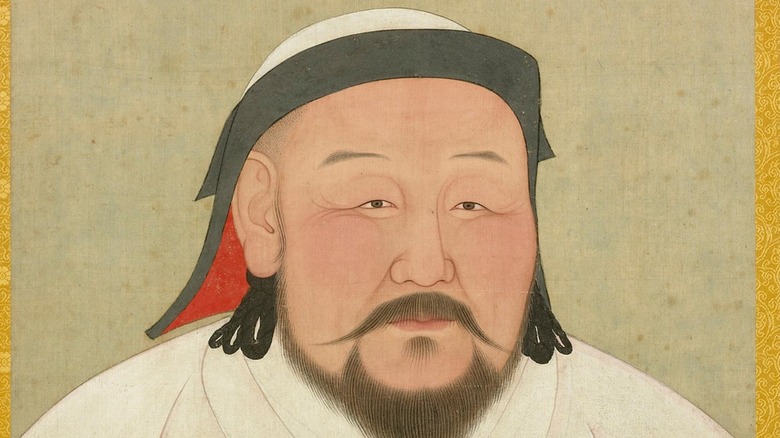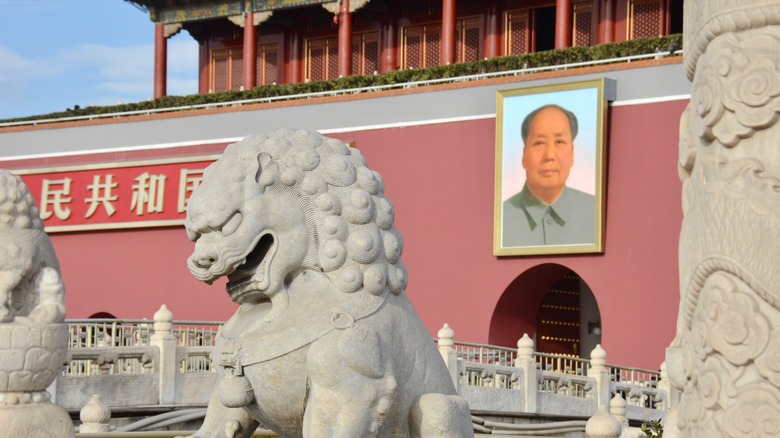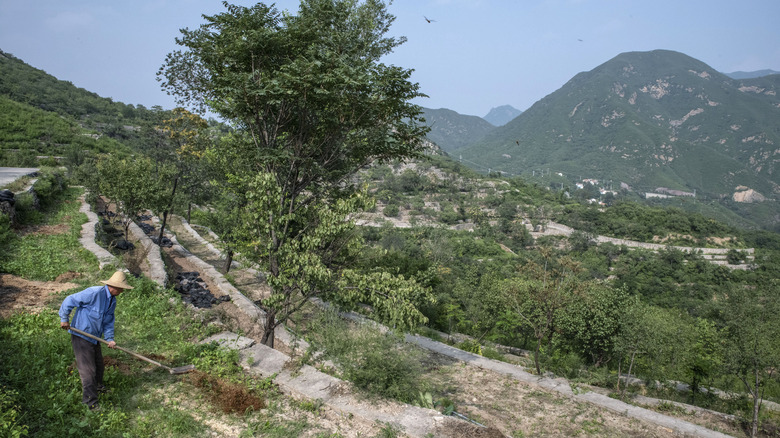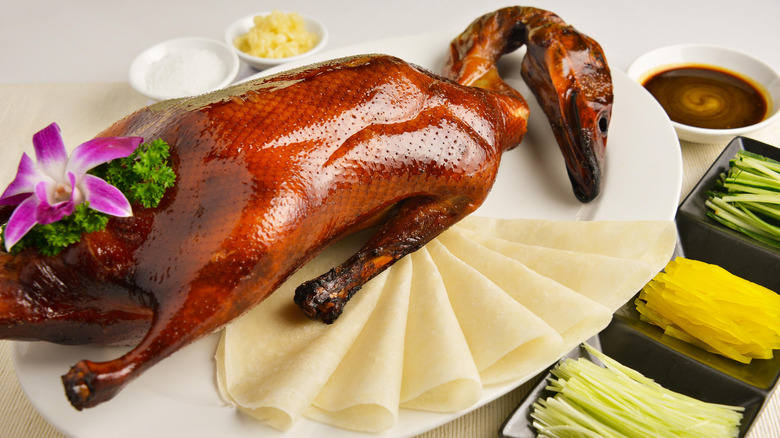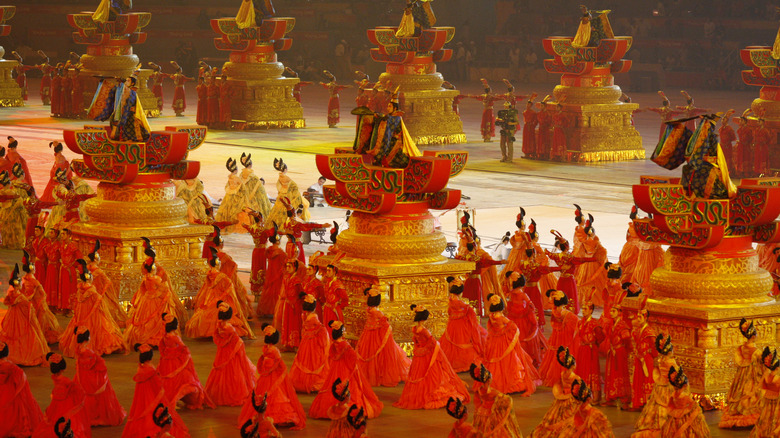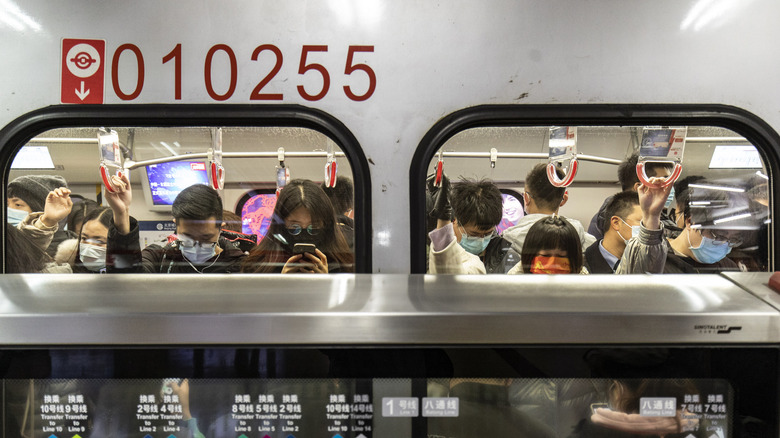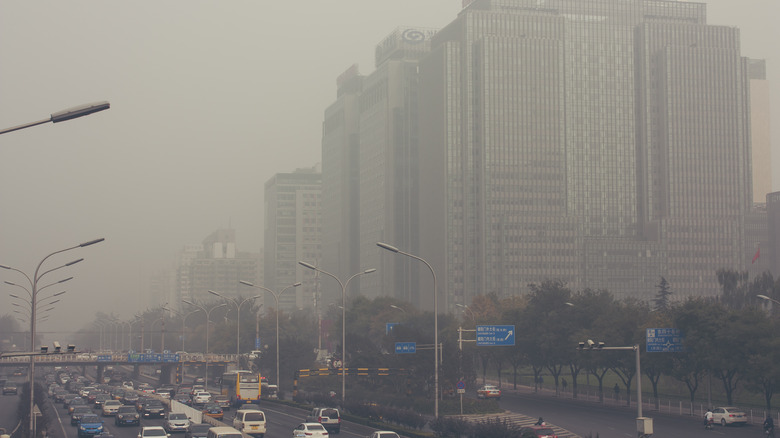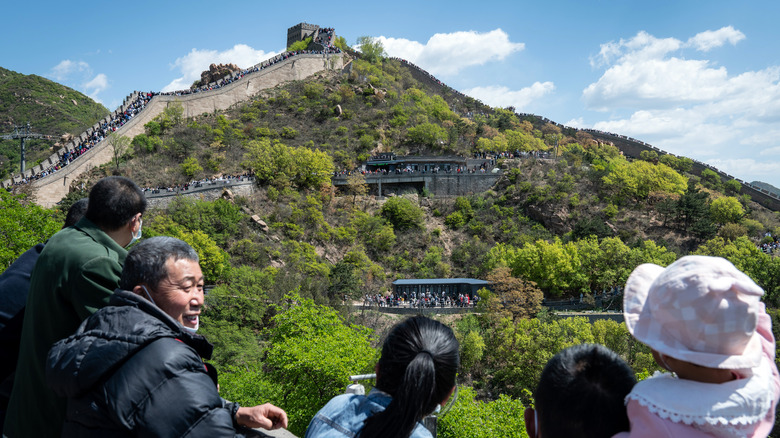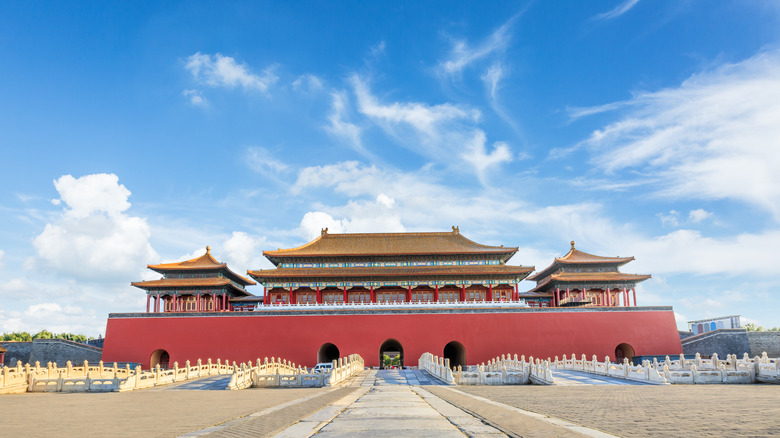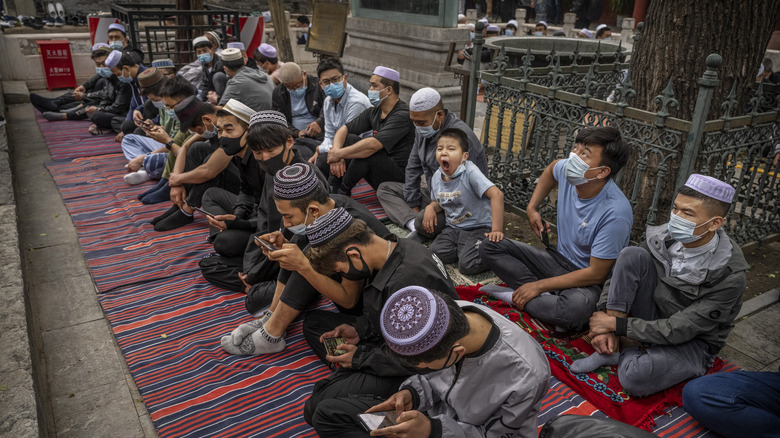10 Things Most People Don't Know About Beijing
Most people who have a passing knowledge of Beijing only know of it as the capital of China. Maybe they even know it is a megacity containing, according to Statista, an estimate of over 20 million inhabitants in its urban area. This makes Beijing the second largest city in China and, as reported by Newsweek, the eighth largest city in the world. To put this in perspective, the largest city of the United States, New York, has about 2 million less people than Beijing.
Aside from its size and status as a national capital, Beijing is also known for being a cultural center. As such, the Travel China Guide informs us that in 2019, 415 million inbound tourists visited Beijing. This is of course before the 2020 COVID-19 pandemic. which hit the city hard. Travel Daily Media reports that tourist revenue declined by over 50% in 2020. Nevertheless, Beijing is a magnet for the curious who wish to learn more about China's culture. Beijing especially has surprising facts about it which most people do not know, and which aren't even shown in some of the world's most famous travel guides. So let's take a look at 10 things most people don't know about Beijing.
Beijing wasn't founded by the Chinese
Beijing's complex history goes back millennia. According to Britannica, the region around Beijing has been inhabited since about 3,000 years ago. In fact, early kingdoms had established capitals near where the city is today. One of the most prominent of these were the Yan who built the city of Ji near the site of the city today. This city, however, cannot be considered Beijing since it was razed by the first emperor of a unified China, Shihuangdi, in the 200s B.C.
The true city of Beijing was actually not established by the Chinese, but by the Mongols who had conquered China and established the Yuan dynasty. Kublai Khan, a successor to Ghengis Khan, replaced the old Mongolian of Karakorum with a new capital which he named in 1272 as Dadu, meaning "Great Capital." After the successful overthrow of the Mongols by the Ming, the city lost its capital status and was renamed in the 14th century to Beiping, meaning "Northern Peace." However, disputes over the throne led one usurper to declare the city his capital, and in 1403 he renamed it Beijing, meaning "Northern Capital." (This name in the West has often been spelled Peking under the Wade-Giles romanization method.) The city became the official capital of the Ming in 1421. The city's name and its status as a capital have changed several times in its history. After the victory of the Communists led by Mao Zedong in 1949, they named Beijing their official capital.
Beijing was selected as China's capital for defense
While Beijing was a past capital of Imperial China and is its current capital, it was no sure thing that, after their 1949 victory, the Communist Party would choose Beijing as their regime's capital. "Beijing: Geography, History, and Culture" details how as the communist success was starting to become a certainty, the Communist Party debated which city should be China's capital. Beijing, Nanking, and Xian were all viable candidates. At last they settled on Beijing for strategic reasons. Firstly, Beijing is located in northeastern China, which was the most industrialized section of the country and also the most vulnerable to foreign attack. This was evident by numerous invasions — carried out before by the Mongols and as recently as the 20th century by the Japanese.
The second reason was a plan to develop the country. By the time of the communist victory, northern China had suffered from long term degradation and had become essentially a backwater. By placing the capital in Beijing, resources would naturally be deployed to revitalize the region. In addition, Beijing allowed the Chinese government to have a forward sphere of influence against the Soviet Union to the north, especially in the border country of Mongolia. Then the last, and probably the most compelling reason, was continuity. Beijing had been a capital of the old Qin dynasty, and many of the trappings of the old imperial government had been well-preserved.
Farming is a large part of Beijing's economy
When you think of urban economies, you are more likely to think of hedge funds and corporations than apples and pigs. Yet in Beijing, agriculture comprises a surprisingly large portion of its economy. This was as part of a government initiative in the 1950s that expanded Beijing's municipal area. As detailed by Britannica, the city has developed a semi self-sufficiency with farming in a belt about the city that is irrigated by channels. As a result, the land is intensively cultivated with a surprising variety of crops, including various vegetables, pears, chestnuts, persimmons, and apples. Livestock such as poultry and pigs are also raised.
Yet Beijing is no bucolic paradise. Agriculture is so intense that the original irrigation channels do not provide enough water, creating a situation where groundwater is used liberally, stressing the water table. The government has tried to alleviate this problem by routing water from the wetter south to the north, but these methods have, in effect, spread the strain. An article published in Nature Communications reports that this problem is unavoidable with current usage and will require more elaborate water engineering projects to meet the city's need. However, the agriculture of such a large city is remarkable. The yield is sufficient enough that Beijing actually exports a portion of its fruit crops to other cities in China.
Beijing has its own style of cuisine
Beijing's vibrancy has allowed it to develop its own style of cuisine. According to National Geographic's "Beijing," the underpinning of Beijing cuisine is from Shandong and is also highly influenced by Chinese Muslims, the Hui. This group, as detailed in "Not Just a Good Food Guide: Beijing" brought lamb heavily into Beijing cuisine and contributed a variety of other types of dishes and baked goods. Popular local dishes in Beijing include boiled tripe, sour bean juice, rinsed mutton, and doornail meat pies (mending roubing). This last dish earned its name since the pies resembled the ornamental knobs on imperial doors (via "Not Just a Good Food Guide: Beijing"). Other dishes which are well known to residents but largely unknown to foreigners include ma doufu, which is a mung dish stir fried in mutton fat and topped with soy beans and pickled greens. Most traditional Beijing food is wheat-based.
Then of course there is the beloved Peking duck. Britannica tells us that traditionally, this four-century-old dish relied on the Imperial Peking breed of duck which are held in small cages in inactivity so the flesh is tender. Beijing also offers a number of internationally known restaurants. The city features two, three-Michelin-star restaurants: Xin Rong Ji which is known for its 28-day-old Peking baby duck, and King's Joy.
Beijing will be the first city to have hosted Summer and Winter Olympics
As part of China's continued policy of expanding its prestige and reputation throughout the world, it has made a point to lobby for and host the Olympics. According to the Olympics website, Beijing first hosted the Summer Games in 2008. This was the first time the Olympics were held in China. To many, it was seen as a coming of age for China in that the country was now entering the upper tier of the most influential countries in the world. What's more, China Business Review commented that the Olympics not only helped to build the country's prestige, but also offered economic boosters through construction and tourism. The success of the 2008 games led China to successfully lobby in 2015 to host the 2022 Winter Olympics. How was Beijing able to pull this off? KTVU contends that Beijing was awarded the honor of hosting because of the 2014 doping scandal of the Sochi Winter games as well as the reported $51 billion cost to run them. Apparently as many as six cities dropped off, allowing Beijing to swoop in.
It is an interesting honor for Beijing, not so much because it is the site of a second games. London, Paris, Athens, and Los Angeles, for example, have each hosted multiple Summer Olympics. What makes the 2022 hosting a first is that Beijing will be the first city to host both Summer and Winter Games.
Beijing's subway is the world's busiest
Since the devastation of the first half of the 20th century — which included the fall of the Qing Dynasty, the Japanese invasion, and then the rise of the communist state, per Britannica — China has spent decades trying to modernize itself. One of these improvements was with transportation. "China's Long March of Modernisation" tells us that in 1969, Beijing became the first city in China to construct a subway system. The reach and use of the system expanded greatly over the subsequent decades so that now, according to Travel China Guide, the subway operates 22 lines with 1 airport express, 345 stations, and 357 miles of track.
It is the second largest system in the world (via "China's Long March of Modernisation"). Only the Shanghai system is larger than Beijing's. Beijing is also the world's busiest subway. In 2016, the system tallied 3.66 billion trips with a ridership of near 10 million daily. A record of ridership was set on May 1 of that year with 12.69 million riders. This record was swiftly broken as, reported by BJNews, in 2018 ridership in one day exceeded 13 million, and then it was broken again in 2019 with 13.75 million riders on July 12. Plans are underway for the system's continued expansion.
Beijing's pollution problem is improving
Beijing has been known as one of the most polluted large cities in the world. One of the most notorious years according to CNN was 2013, which was dubbed an "air-pocalypse." It was so bad that Reuters reported that pollution was 30 to 45 times higher than what was safe and advised people to stay indoors. It was so bad that people modified their schedules to avoid the worst of the pollution. The sky, as provided by nature, could not be seen on a regular basis — just a blank gray canvas.
The pollution was so egregious that even an authoritarian government like the Chinese Communist Party could not ignore it. Since 2013, an anti-pollution initiative driven by surprising local dissent has allowed blue skies to be seen in Beijing once again. While this nascent environmental movement threatened to go national and the government tamped down on it, the message was heard. The government at that point changed course from an economic growth at any cost policy to one that was more environmentally friendly. Air monitoring stations were instituted and highly polluting coal mines and plants were shuttered. While there is certainly a long way to go, skies in Beijing are now touted as being (sometimes) blue rather than smog gray.
Beijing has seven UNESCO world heritage sites
For globetrotters looking to check off their tourist bucket list, there is no more efficient place to travel than Beijing. There is a good reason that Beijing is the number one tourist city in China. Beijing not only represents the real power of the Chinese state, but it also is an incredibly important center of China's culture and history. This is reflected in the fact that the city contains seven UNESCO World Heritage sites. This makes it one of the densest collections of such sites in any city in the world, thus wowing any tourist.
These sites include the Grand Canal, the Forbidden City, a section of the Great Wall, the summer palace of the Qing Dynasty, the Temple of Heaven, and the Ming Tombs. Aside from these places which highlight the history of China, just outside the city, the depth of our knowledge of the human past was greatly augmented. Tourists may also visit the excavation site where the famous "Peking Man" remains of Sinanthropus pekinensis (now known as Homo erectus pekinensis) were discovered.
The number one tourist site in the world is in Beijing
Of Beijing's UNESCO sites, the Forbidden City is easily the most popular, with Statista showing over 19 million visitors in 2019. The Forbidden City is appealing not least because of its daunting name. As related by Britannica, this palace complex was commissioned in 1406 by the Ming dynasty and earned its name since most Ming subjects were not allowed to enter it. The 178-acre Forbidden City was built keeping a strict adherence to the elements of feng shui and Chinese architecture. It served as the center of Chinese government until the end of the Qing Dynasty. Today, the Forbidden City is now a museum which houses, according to UNESCO, significant state treasures from the Imperial period. These factors make it, as claimed by China Daily, the most visited tourist museum in the world.
So popular is the Forbidden City that Reuters reported that the Chinese government, in fear that damage would occur, had taken measures to limit access to the Forbidden City as early as 2014. Asia Times states that visitors were capped at 80,000 visitors per days during the peak season.
Beijing has minorities
While Beijing is indeed the cultural heart of China, it is also like other world metropolises in that it's diverse, albeit less than others. Britannica points out that Beijing's population has an overwhelming majority of ethnic Han Chinese (over 95% of residents, per World Population Review), but there are also numerous minorities in the city. These other groups are Chinese Muslims (Hui), Manchus, and Mongols. Beijing is hardly a polyglot, though, since the standard language spoken in the city is a local dialect of Mandarin.
The city also has an interesting demographic spread. According to Statista, there are relatively few old and few children in the city with most of the population comprised of working age people. Aside from these groups, there is also a large number of foreigners who live in the city for work as diplomats, businesspeople, journalists, students, and teachers. South Koreans in particular have thronged to Beijing with an estimated 200,000 migrating to the city. Most of these foreigners live apart from the general population in the city. They tend to live in the city's new highrises and are catered to by the city government.
